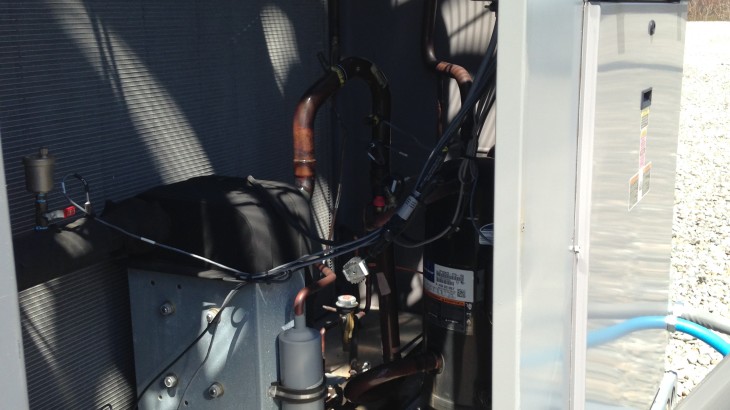The United States Department of Energy (DOE) announced last week its largest energy efficiency standards in history for commercial air conditioners and furnaces. The DOE expects “businesses will save $167 million on their utility bills and carbon pollution will be reduced by 885 million metric tons,” over the course of the products’ lifespans. The new standards will roll in out two phases, starting in 2018 and again in 2023. At each roll out, each phase is expected to deliver a 13 and 15 percent increase in energy efficiency improvements, respectfully.
Commercial Air Conditioners
Commercial air conditioners, also known as rooftop units (RTUs), are packaged air conditioning units that are used in 46 percent of all commercial buildings in the U.S. Combined, they consume 1.3 quadrillion BTUs of energy annually. Even a slight increase in energy efficiency means enormous energy savings. Several measures to improve efficiency in rooftop units include economizers, advanced controls, and variable speed drives on fans. All three of these improvements work to power down or reduce the energy output needed, which reduces the overall load capacity required. The unit will still produce the desired level of comfort, heating, and cooling to a building while saving energy in the process, typically by up to 30 percent.
Furnaces
According to the American Society of Heating and Air-Conditioning Engineers (ASHRAE), the average life expectancy of a gas- or oil-fired commercial furnace is 18 years. Commercial businesses and institutions are encouraged to upgrade or retrofit existing furnaces to more efficient models. The older the equipment, the less efficient. Energy.Gov estimates older furnaces have efficiency ranges between 56%-70%, while modern heating systems can see up to a 98.5% efficiency rating.
Efficiency ratings are determined on a number of factors, including size of the equipment, control settings, and a functional venting system, heat exchanger, or other equipment features.
According to Energy.Gov, signs that your furnace may be inefficient include:
- Natural draft that creates a flow of combustion gases
- Continuous pilot light
- Heavy heat exchanger
- 56%-70% annual fuel utilization efficiency (AFUE)
New Standards – What Does This Mean For My Business?
Since the new standards will not be published until 2016, Prism can only speculate on how this will affect businesses. We predict, however, that older systems, even those that are under their average expected lifespan, will need to be retrofitted or replaced with a more efficient system. While more efficient systems save businesses both energy and money, retrofits and replacements of rooftop units or furnaces are large investments. Fortunately, when the new standards are implemented, Prism can help identify the most cost-effective solution that meets the criteria standards for your business.




